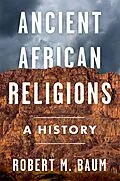Scholars have sometimes maintained that the study of the history of African religions is an impossible endeavor. Some have contended that African religions do not have a history unto themselves, apart from their interaction with the newer religious traditions of Islam and Christianity. Others concede that such a history exists, but believe the source materials are insufficient to reconstruct such a history. This book speaks directly to these critics. The history of African religions becomes in many ways like a pentathlon, expecting the scholar who conducts such research to work with written texts, to learn African languages, to live within a community where these religious traditions are practiced, to study material culture, both sacred and mundane, and a variety of archaeological sources from tree rings to stone circles and gravesites. By relying on the existing corpus of written texts, oral traditions, linguistic analyses, descriptions based on participant observation, and various types of archaeology, Robert M. Baum demonstrates that African religious history is nearly as old as humanity itself. Baum has spent his entire academic career focused on the historical study of African religious traditions, as far back as accessible sources will permit. This volume traces the history of African religions beginning with early hominids and their ritual and burial sites through ancient Egypt, North and Northeast Africa, and Africa south of the Sahara from the Fourth Millennium BCE to the birth of Islam in the Seventh Century.
Autorentext
Robert M. Baum chairs the Department of African and African American Studies and is a professor in that department and the Department of Religion at Dartmouth College. He is the author of two other books, the award-winning Shrines of the Slave Trade: Diola Religon and Society in Precolonial Senegambia and West Africa's Women of God: Alinesitoue and the Diola Prophetic Tradition. He served as Executive Editor of the Journal of Religion in Africa for six years.
